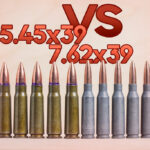
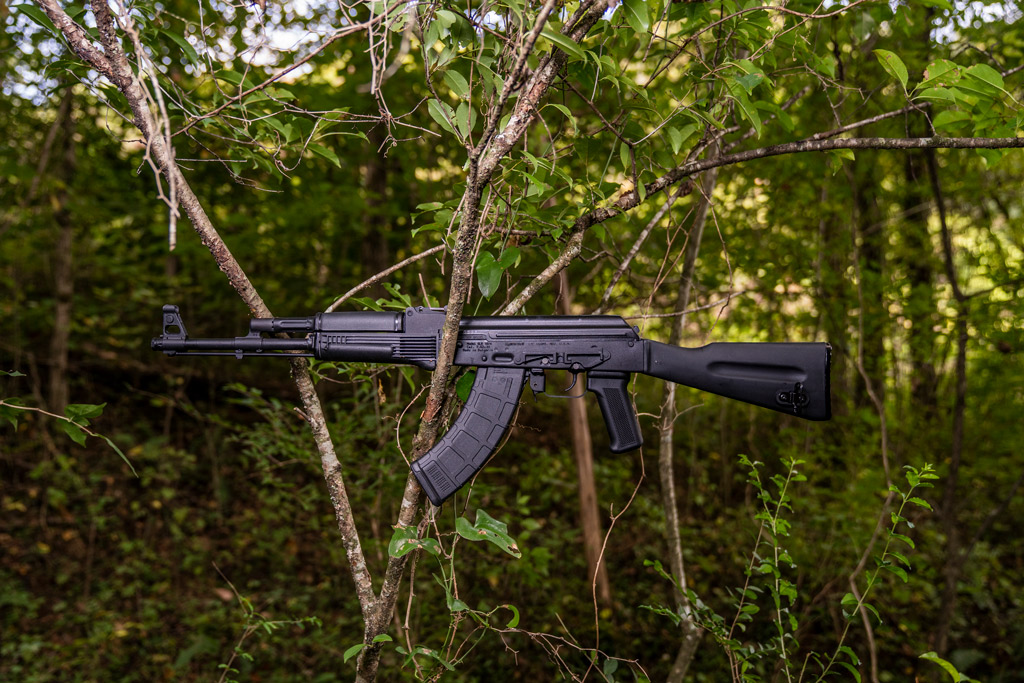
A History Of The AK-47 Rifle
American soldiers first came up against the AK-47 in the jungles of Vietnam during the early 1960s. Before that, the earliest reference to this Soviet-designed weapon came from a 1953 CIA resource. A rough drawing suggested this new gun was a derivative of the PPSh – the Russian standard submachine gun. Photos of it surfaced during the 1956 Hungarian Revolt. This cemented the history of the AK-47 as a formidable weapon. Western observers took notice as they realized they were up against something new.
The AK47 still gets noticed, even though it’s been around for a while. Like any weapons design that has been around for generations, the AK has lovers and haters perhaps in equal amounts. Supporters wax poetic about its reliability and robust ability to take abuse along with its comparatively low price (in otherwise stable markets). Detractors condemn it for its supposed inaccuracy and often crude finish; some going so far as to accuse its designer, Mikhail Kalashnikov, of copycatting the design. While it certainly will never be a tack-driving range weapon, the latest estimates of their being anywhere between 100 and 200 million AK-type rifles in the world suggests it is not an altogether bad weapon system.
Famous The World Over
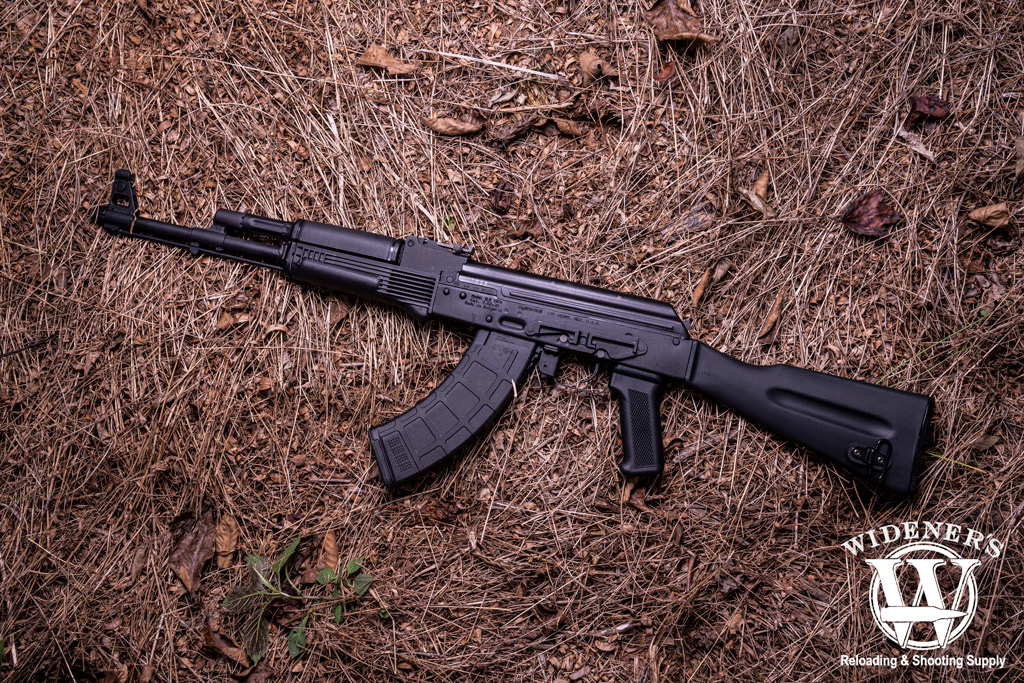
From World Wars, to television and movies, the AK-47 is one of the most recognized weapons in the world.
The AK is one of the most recognized weapons in the world. Mozambique has it on its flag. Good and bad guys have it as their weapon of choice in movies. It has been vilified as the weapon of oppression and embraced as the gun of liberation depending on where one falls on the global socio-economic-political spectrum. Objectively speaking, its production and dispersal across the world inspired a change to small arms development. The fact that it still is out there is a testament to its combat as wells as its political efficacy.
Like it or not, its designer, Kalashnikov did not design the gun completely in a vacuum. While the AK epitomizes what people assume to be an “assault rifle” it was not the first. The need to offer a selective-fire shoulder-fired weapon that had more punch than a submachine gun but less recoil than a full rifle was recognized even before bullets started flying in World War II. Even the peacetime US Army, with oppressive peacetime budget constraints, was looking into options of a middle ground rifle and adopted the M1 Carbine by 1940. Of course, the Carbine was not select fire – the M2 was introduced a decade alter – but the notion that rifles needed to have 500 or more yard accuracy was being challenged in favor of fire superiority.
The German Influence
Many recognize that the first production assault rifle is the Sturmgewehr. As the story goes, during World War II, Adolph Hitler inserted himself into the minutiae of everything going on. Going so far as demanding that arms production focus exclusively upon submachine guns (SMG), or machine pistols, such as the 9mm MP40 Schmeisser.
The Sturmgewehr was first sent to the front for testing in 1943. It was classified as MP43, or machine pistol ’43 to comply with those orders. Yet it was not an SMG. It fired a shortened rifle round, the 8mm Kurz, or 8mm Short (7.92x33mm) and it outperformed rifles and submachineguns in both assault and defense tactics. Once tests were done, Hitler’s generals requested more of these weapons be made. The rifle was rechristened the Sturmgewehr (STG) ‘44. Otherwise known as the storm rifle or assault rifle.
On the Russian side of events, Kalashnikov began exploring weapon designs from October 1941 to June 1942. He worked while recuperating from wounds received in the Battle of Bryansk. This happened a year before the Russians were introduced to the business end of the MP43/STG44. Like other Soviet soldiers, Mikhail was dismayed that his countrymen lacked effective firearms. Russia remained outgunned on the battlefield at the war’s early stages. Inspired, Kalashnikov began designing a compact submachine gun. Military leaders did not accept his designs. They did get him invited to participate in creating a new medium-sized rifle though. This next-generation service weapon needed to be centered on a new cartridge.
7.62 History
There are debates on how much the STG inspired the AK. The impact of the cartridge is well documented. The STG was captured shortly after being deployed to the Eastern Front. The design intrigued the Russians. It looked like one of their SMGs, but fired a larger round. In 1943, after testing the cartridge and weapon they became committed to making a version of their own. In keeping with Soviet doctrine, they wanted a caliber their other weapon barrels were bored to 7.62mm.
The result was the 7.62×39 M43 cartridge. Russians do not have time for things that do not work. This new cartridge design was for harsh weather conditions. The sloped body of the bottlenecked cartridge aided feeding and extraction. It also led to the iconic curve of what would become the AK’s recognizable magazine.
Rise Of The 7.62×39
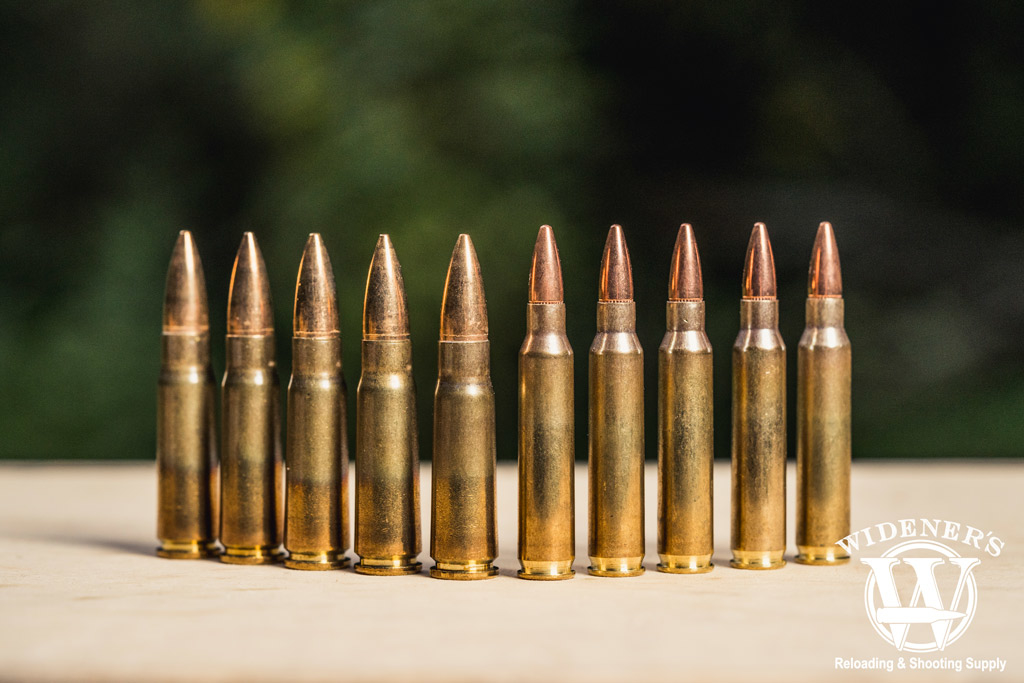
The 7.62×39 bullet (left), next to the .223 bullet (right).
The next year, Kalashnikov presented a gas-operated rifle chambered in this new round. It was not a copy of the STG. Instead, it showed influences from the American M1 Garand rifle with the gas system under the barrel. The design lost to another rifle system submitted by Sergei Simonov, which entered service in the closing days of the war as the SKS.
The SKS offered the fighting soldier improvements over the bolt action M91 rifles. However, it was not really an assault rifle. It did not have the selective fire feature to fit that designation (take note modern media). It was clear another series of weapons tests would be forthcoming. Undaunted, Kalashnikov returned to the drawing board and kept fiddling with his design. Learning from the SKS, he moved the gas tube to the top of the barrel. This was how the STG operated too. He removed the non-reciprocating bolt handle of his earlier design for a molded spur on the bolt body itself. He also made the dust cover serve as the combination safety and selector: all steps to simplify production and use.
A New Prototype
In 1946, the Soviet military held another rifle competition and they selected a new prototype. Christened as the Avtomat Kalashnikova model 1947. Production began immediately. The Soviet military started receiving the first models in 1949.
There are certain features that are common to Soviet-designed hardware that becomes evident to observers. As mentioned before, Russians do not have time for things that do not function as they should. At the same time, if a tool designed for a specific function suffices for a different application, they will happily use it as such. Even if that was never the original intention. That tendency to promote function over form fit well with both Russian pragmatism and Soviet manufacturing.
What this means for the AK47 is that while its accuracy was typically less than precise – sometimes referred to as simply a “bullet hose” – it had durability and a simplicity to it that appealed to the Russians on a political and cultural level. Given the AK’s diaspora throughout the land, its appeal was not exclusive to residents of the Motherland. The rifle is simple to use, simple to clean. Admittedly, not often a priority by many of the rifle’s users over the years. It’s impressively reliable. If somehow it does break it is cheap to replace. Component parts are not very high-tech. Making repair an option over replacement.
AK-47 Model Varients

The stamped steel receiver is the most common variant of the AK-47.
There was, of course, a manufacturing learning curve in the early days of production. Ultimately, these resulted in models that are divided into four types: type 1 from 1949-1951; type 2 from 1951-1954; type 3 from 1954-1959 and from then on, type 4 or AKM. Types 2 and 3 are notable. Manufacturing was now on milled receivers. Before, it was stamped steel. They are heavier and less prone to torqueing or “twisting” when fired. Potentially making them more accurate than their stamped steel siblings.
This rigidity also made them prone to cracking when heavily used. It’s debatable whether it was weight or cost-effectiveness. Type 4 returned to a stamped steel receiver with pins, rivets, and a few spot welds. A heavier longer barreled version was made as a squad automatic weapon (SAW) – the RPK. The type 4 is the cheapest of all Soviet-made AKs. It is the most prolific to earn the rifle its reputation for being remarkably reliable and ultimately disposable. Small wonder it became the hard currency the USSR used to court client states throughout the Cold War.
Accuracy With The AK-47
Kalashnikov’s objective was to equip a fighter not with a long-range precision weapon but a tool that made each individual capable of holding their own. Or, at the very least able to make themselves a presence on the battlefield with a select-fire, fully automatic weapon. The upside for the user being that it was cheap and readily available. To that end, he was undoubtedly successful.

A target shot with 7.62×39 ammo at 25 yards.
Standard expectations for the rifle? Hit a man-sized target at 300 meters. Getting 10 shots consecutively on such a target can prove difficult with most production models. Consistent hits at 100 meters are more common and given the training – or lack thereof – of the conscript or irregular forces that the AK was supplied to over its history, this was acceptable.
This does not mean that the rifle was not improved upon. Many users have participated in tweaking or fine-tuning their personal weapons to achieve better results. Design changes were proposed. However, not for accuracy. The Vietnam War was the AK’s largest deployment. After reviewing war reports, the Russians chose to rechamber their rifles in a round that mimicked the performance of the 5.56 NATO round.
With smaller cartridges, more could be carried. Even with magazine capacities remaining at thirty. This was the AK74 chambered in 5.45×39: a narrower bullet with lighter recoil, better controllability, and grievous tumbling when it entered soft tissue.
AK-47 Future Proof?
The newer generation served throughout the Russian’s dalliance in Afghanistan where it, ironically, went up against the AK47. To date, the Russians still use the 5.45×39 round but the widespread success of both the 47 and its larger round make abandoning the 7.62×39 logistically unacceptable.
The AK100 series introduced itself in 2001. These new models offered better ergonomics and accessory options for sights and lights. Manufacturing for these is in 7.62×39, 5.45×39, and 5.56 NATO. These rifles are designed for export. They are used anywhere in the world with locally sourced calibers. Making it an easy grab for terrorists. A logistics boon for any invading force trained on a specific weapon system.

The AK-47 has been proven to be a versatile rifle on and off of the battlefield.
Returning To The 47
AK variants are made in over thirty countries. The United States is one of them. Reverse-engineering of the weapon is easy due to its simplistic design. Many “cottage industries” are able to produce service quality units out of workshops in the mountains of Pakistan or plains of Africa. Meanwhile, many first-world “official” manufacturers have made efforts to further the rifle’s accuracy, performance, and service life.
These efforts to improve the rifle are not a failing of the original design. Rather, the AK47 has proven itself to be a very versatile platform that has answered the needs of the official and less legitimate worldwide shooting community. Quite simply, bad gun designs do not survive seven decades of use everywhere in the world.
Many gun enthusiasts may deride the gun’s use of rudimentary machining. The simplicity of components and variance of performance qualities overrides the complaints. This is like comparing apples to Twinkies. The AK design never outshined the M1 or M14 Service rifles. It was just more versatile. They were the AKs direct competitors when it was introduced. When it comes to arming a great many people as quickly and cheaply as possible, the AK47 certainly serves its purpose.
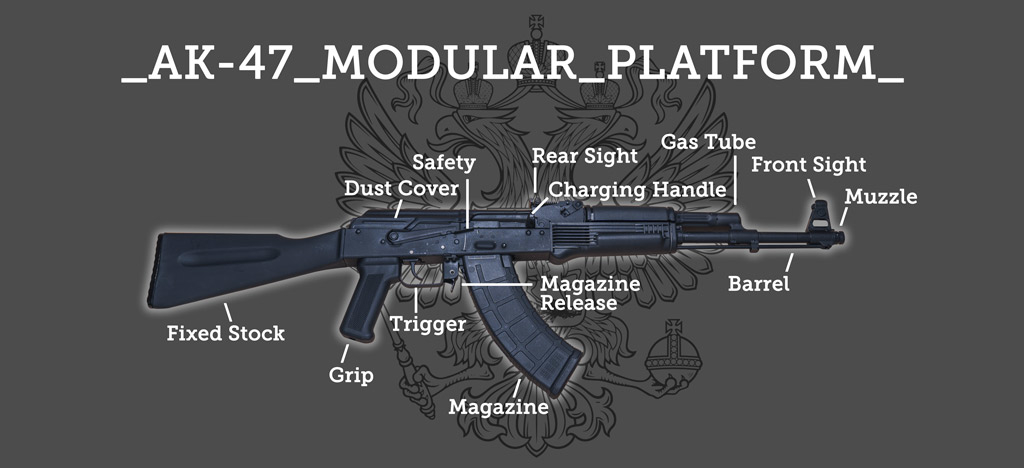
The modular AK-47 rifle platform.
| AK-47 | AK-47 or Clone | AK-100 Series | |
|---|---|---|---|
| Furniture | Yes | Included | Yes |
| Optics | With side mount equipped models | With side mount equipped models | Yes |
| Sights | Inserts | After Market, Inserts | Inserts |
| Alternative Calibers | No | Not Available | No |
| Trigger Upgrades | Yes | After Market, Yes | Yes |


